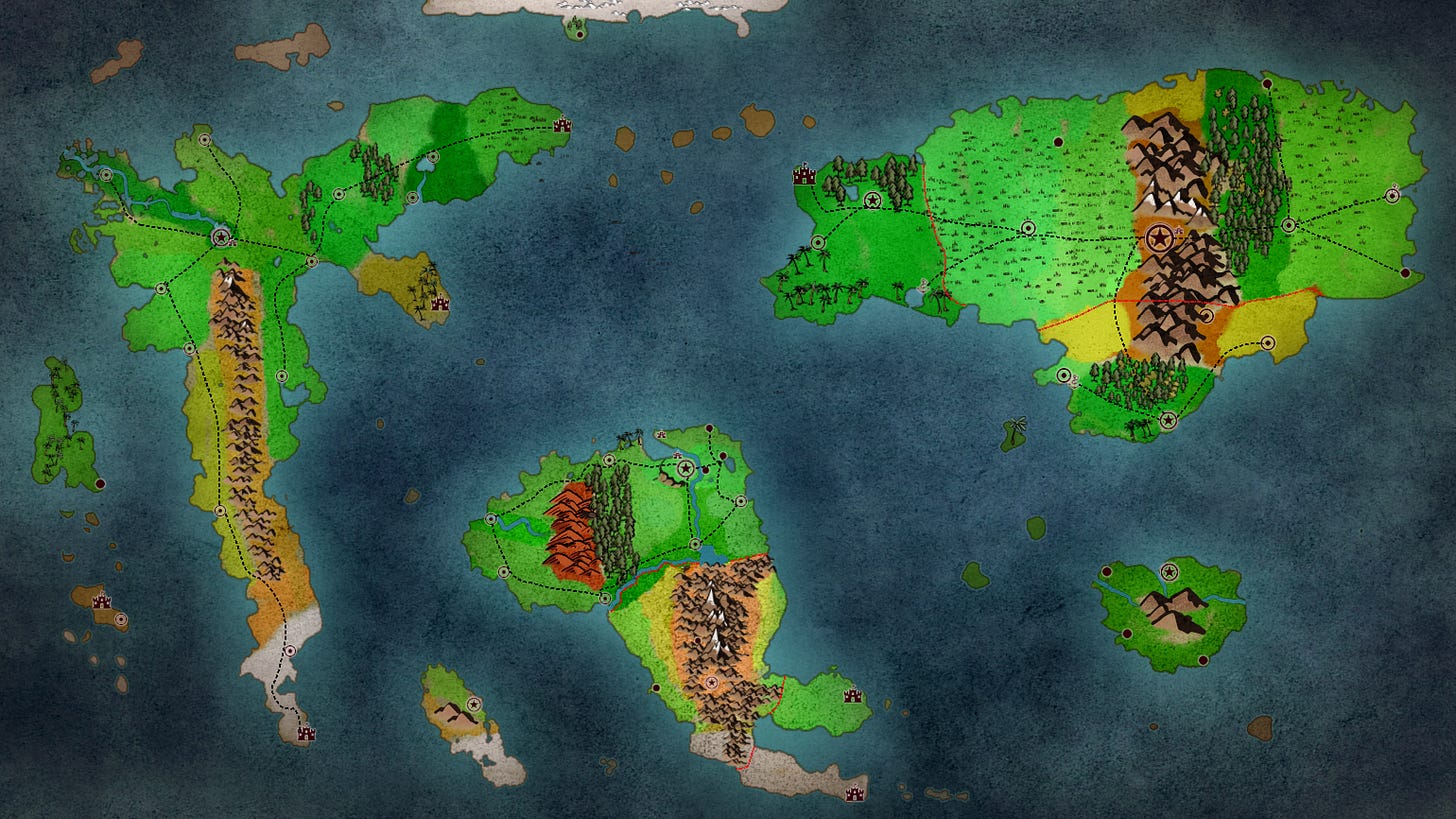Wonderdraft: A Review
When I started to read fantasy and science fiction, I was always fascinated by the maps that would be included as part of the books. I have yet to get through the entire Lord of the Rings series, but I have had several looks at the map Tolkien created of Middle Earth, and it helped keep things straight for me. I saw the map at the beginning of The High King by Lloyd Alexander and I still can’t keep straight where everyone is going – it just seemed like a jumble of symbols stuck around randomly on a sheet of paper. Dune by Frank Herbert had a unique looking map, but if you have the paperback version of this, it looks like he drew it using the smallest commercially manufactured pencil in existence and a magnifying glass to do the job. I think it took me about four years to totally understand it and be able to use it to follow along with the action in the book. (I needed it, too – that’s a book that has an 18-page glossary of terms and terminology because otherwise nobody would be able to keep the dialogue straight.
In classic fantasy/science fiction, the best map I ever came across was George R.R. Martin’s one for A Game of Thrones. As I have exhaustively described in this space, I was obsessed with and then bitterly disappointed with the television series - enough to try fanfiction for the first time in my life - and I have read the first book of GRRM’s series. I’ve been nervous about diving into the rest of the book series – am I going to be disappointed again? I’m not sure, but I think I’ll have to dip into it eventually.
Anyway, I really loved that first map I saw of Westeros. I immediately got a sense of place from it. I sensed the lay of the land, where all of the great events of the book took place, and an idea of the size and scale of those events as well.
The idea of who came up with those maps was something I didn’t think about, and to be honest, when I started writing this, I have to admit I was still in the dark about it. My assumption has always been that either the authors were coming up with those maps themselves, artists created them based off the author’s notes, etc., or some combination of the two. After a quick Google search over a few articles, I was happy to see that my assumptions were more or less on the mark. I was pleasantly surprised, but not overly so, that so many of the classic authors (Tolkien, Stevenson, etc.) did wind up creating their own maps, and doing a decent job of it as well.
That was something that always intimidated me as an author. I have a few talents, but drawing and art were never one of those. My wife and daughter are the members of my family that have a clear artistic talent. I might be able to put together some squiggly lines and something that might approach the coastline of Europe and/or Africa, but nothing that would look respectable in a cartography book, or even my own book.
This year, I was wandering around Reddit, as is my wont to do during my off-times, and I kept hearing about a computer software program by the name of Wonderdraft. It had been around for a few years, and I kept hearing about how people were using the program to create their own maps for their fantasy novels. (Another big purpose for their maps was to serve as locations for their Dungeons and Dragons or other role-playing-games.) It appeared that this was something that was going to give me the ability to create a map without having any discernible artistic ability whatsoever? I was intrigued.
Keep reading with a 7-day free trial
Subscribe to The Writing Life With Jason Liegois to keep reading this post and get 7 days of free access to the full post archives.

